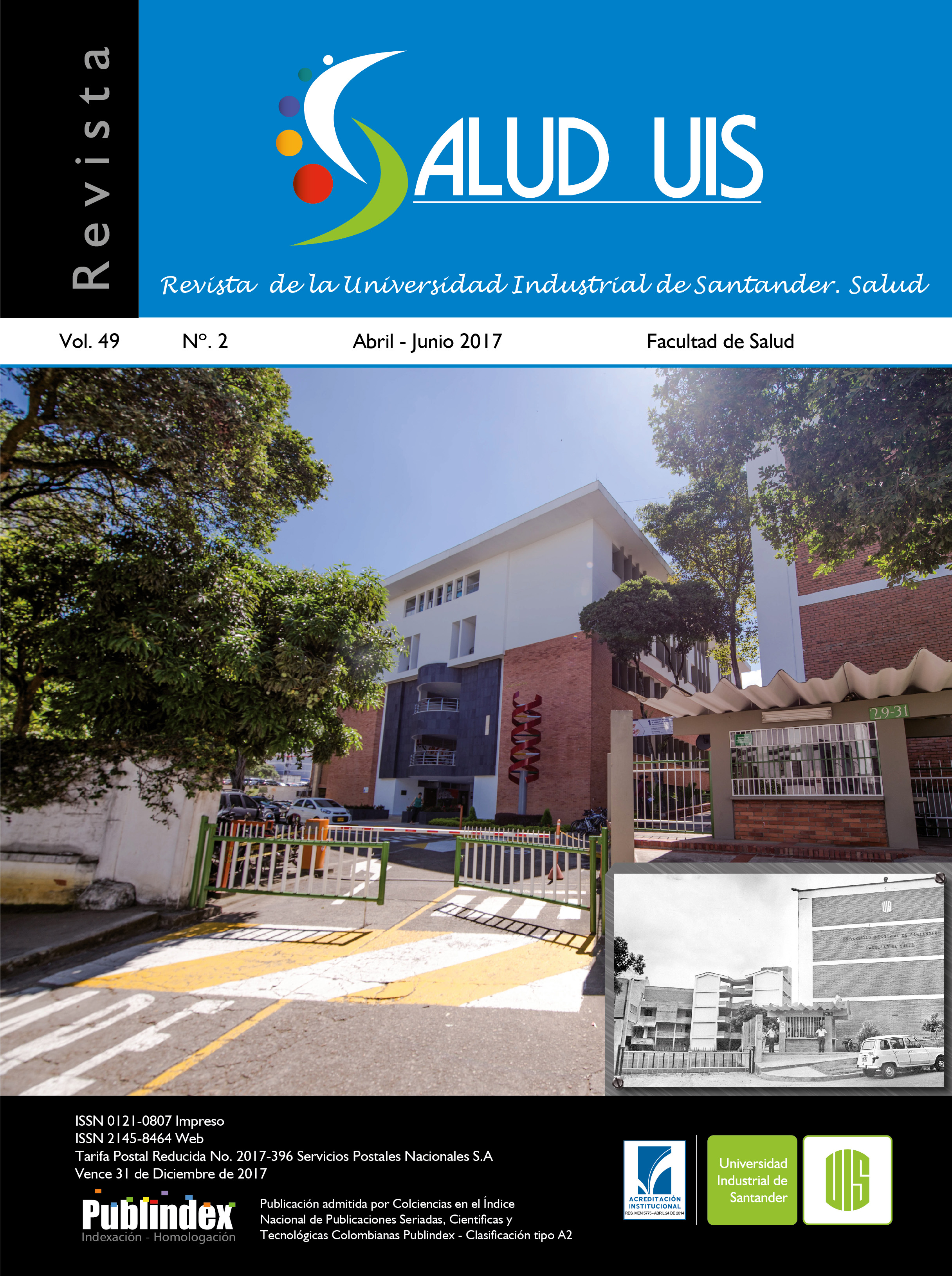Abstract
Objective: To determine the social and economic factors that affect he nutritional status of children under five years of age. Methods: A cross-sectional study carried out with a sample of 600 children were attended the Children’s Hospital Napoleón Franco Pareja (HINFP) whose mothers were administered a standardized instrument to capture the socioeconomic information and nutritional status of the child. Two econometric models were estimated using Generalized Threshold, taking as dependent variable-height for age and weight for height and as independent variables: birth weight of the child, number of prenatal controls, level of household income, use of sewerage and aqueduct services, mother’s body mass index (BMI), among others. Results: According to the height for age indicator, 48.05% of children suffer from chronic malnutrition. The indicator weight for height showed that 22.09% of children have a deficit in their body mass (acute malnutrition) and 13.53% were overweight or obese. 76.02% of mothers of children with normal height for age have completed secondary or higher education. 56% of children in households with incomes below current legal monthly minimum wage have acute malnutrition problems. Regarding the determinants, higher incomes reduce the likelihood that a child would suffer malnutrition. Breastfeeding time, occupation and maternal nutritional status are protective factors. Increasing gestational age at birth increases the likelihood of a normal size. Conclusions: This research generated evidence for health policy review of child nutrition. The raising of incomes and the promotion breastfeeding would improve the nutritional status of children.References
Delpeuch F, Traissac P, Martin-Prével Y, Massamba J, Maire B. Economic crisis and malnutrition: socioeconomic determinants of anthropometric status of preschool children and their mothers in an
African urban area. Public Health Nutr. 2000; 3(01).
Marrugo-Arnedo C, Moreno-Ruiz D, Castro-Ávila R, Paternina-Caicedo Á, Marrugo-Arnedo V, AlvisGuzmán N. Sociodemographic Determinants of child nutrition in Colombia. Salud Uninorte. 2015;
(3): 446–457.
Larrea C, Kawachi I. Does economic inequality affect child alnutrition? The case of Ecuador. Soc Sci Med. 2005; 60(1): 165–178.
Gaviria AU, del Mar Palau MM. Nutrición y salud infantil en Colombia: determinantes y alternativas de política. Coyunt Económica. 2006; XXXVI(2).
Pelletier DL, Frongillo EA, Schroeder DG, Habicht JP. The effects of malnutrition on child mortality in developing countries. Bull World Health Organ. 1995; 73(4): 443–448.
Linnemayr S, Alderman H, Ka A. Determinants of malnutrition in Senegal: Individual, household, community variables, and their interaction. Econ Hum Biol. 2008; 6(2): 252–263.
Acosta Karina. La desnutrición en los primeros años de vida: Un análisis regional para Colombia. Vol. 160, Documentos de Trabajo sobre Economía Regional. 2012.
Ruel M, Hoddinott J. Investing in early childhood nutrition: Policy briefs. International Food Policy Research Institute (IFPRI); 2008.
Jesmin A, Yamamoto SS, Malik AA, Haque MA. Prevalence and Determinants of Chronic Malnutrition among Preschool Children: A Crosssectional Study in Dhaka City, Bangladesh. J Heal Popul Nutr. 2011; 29(5): 494–499.
Fakir AMS, Khan MWR. Determinants of malnutrition among urban slum children in Bangladesh. Health Econ Rev. 2015; 5(1): 22.
Sobrino M, Gutiérrez C, Cunha AJ, Dávila M, Alarcón J. Desnutrición infantil en menores de cinco años en Perú: tendencias y factores determinantes. Rev Panam Salud Publica. 2014; 35(2).
Paraje G. Desnutrición crónica infantil y desigualdad socioeconómica en América Latina y el Caribe. Rev Cepal. 2009; 99.
Fondo de las Naciones Unidas para la Infancia (UNICEF). La Desnutrición Infantil: Causas, consecuencias y estrategias para su prevención y tratamiento. 2011.
Almond D, Currie J. Human Capital Development Before Age Five. Cambridge, MA.
Pollitt E, Gorman KS, Engle PL, Rivera JA, Martorell R. Nutrition in early life and the fulfillment of intellectual potential. J Nutr. 1995; 125(4 Suppl): 1111S – 1118S.
Hunter PR, Prüss-Ustün A. Have We Substantially Underestimated the Impact of Improved Sanitation Coverage on Child Health? A Generalized Additive Model Panel Analysis of Global Data on Child
Mortality and Malnutrition. Ali M, editor. PLoS One. 2016;11(10): e0164571.
OMS. Estadisticas Sanitarias Mundiales 2015. 2015.
NUD. Los objetivos de desarrollo sostenible y la iniciativa de ciudades prósperas.
Instituto Colombiano de Bienestar Familiar (ICBF). Resumen ejecutivo de la Encuesta Nacional de Situación Nutricional en Colombia (ENSIN). 2010.
OMS. Patrones internacionales de crecimiento infantil de la OMS. 2007; 42.
Long JS, Freese J. Regression Models For Categorical Dependent Variables Using Stata. A Stata Press Publ. 2001.
Benicio MHD, Martins APB, Venancio SI, Barros AJD de, Benício MHD, Martins APB, et al. Estimativas da prevalencia de desnutricao infantil nos municipios brasileiros em 2006. Rev Saude Publica. 2013; 47(3): 560–70.
Debnath A, Bhattacharjee N. Factors Associated with Malnutrition among Tribal Children in India: A Non-Parametric Approach. J Trop Pediatr. 2014; 60(3): 211–5.
Ortiz J, Van Camp J, Wijaya S, Donoso S, Huybregts L. Determinants of child malnutrition in rural and urban Ecuadorian highlands. Public Health Nutr. 2014; 17(09): 2122–2130.
Mwabu G. The Production of Child Health in Kenya: A Structural Model of Birth Weight. J Afr Econ. 2008; 18(2): 212–260.
Ewusie JE, Beyene J, Ahiadeke C, Hamid JS. Malnutrition in Pre-school Children across Different Geographic Areas and Socio-Demographic Groups in Ghana. Matern Child Health J. 2017; 21(4): 797–808.
Volpicelli K, Buttenheim AM. Do Social Factors Predict Appropriate Treatment of Child Diarrheal Disease in Peru? Matern Child Health J. 2016; 20(11): 2299–2308.
Man SL, Guo Y. Research on the social determinants of malnutrition among children under the age of 5 in China. Beijing Da Xue Xue Bao. 2016; 48(3): 418–423.
Bertranou FM, Delajara M, Amiune O. Una Función de Producción de Salud Infantil para Argentina. Universidad Nacional del Sur. 2002: 1–13.
Cuevas L, García G. La producción de salud infantil en Colombia: una aproximación. Desarrollo y Sociedad. 2007;59: 21–62.
Se autoriza la reproducción total o parcial de la obra para fines educativos, siempre y cuando se cite la fuente.
Esta obra está bajo una Licencia Creative Commons Atribución 4.0 Pública Internacional.
